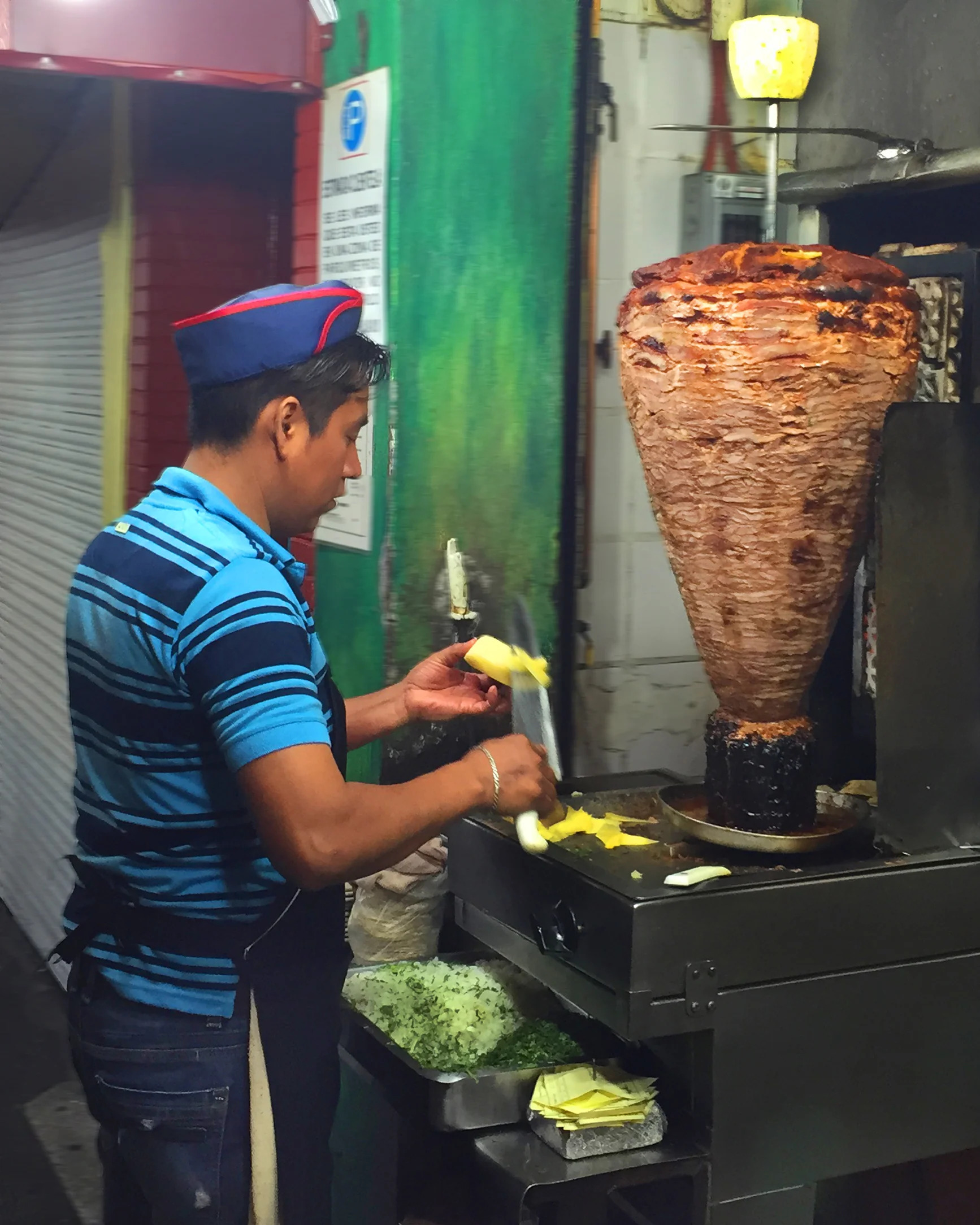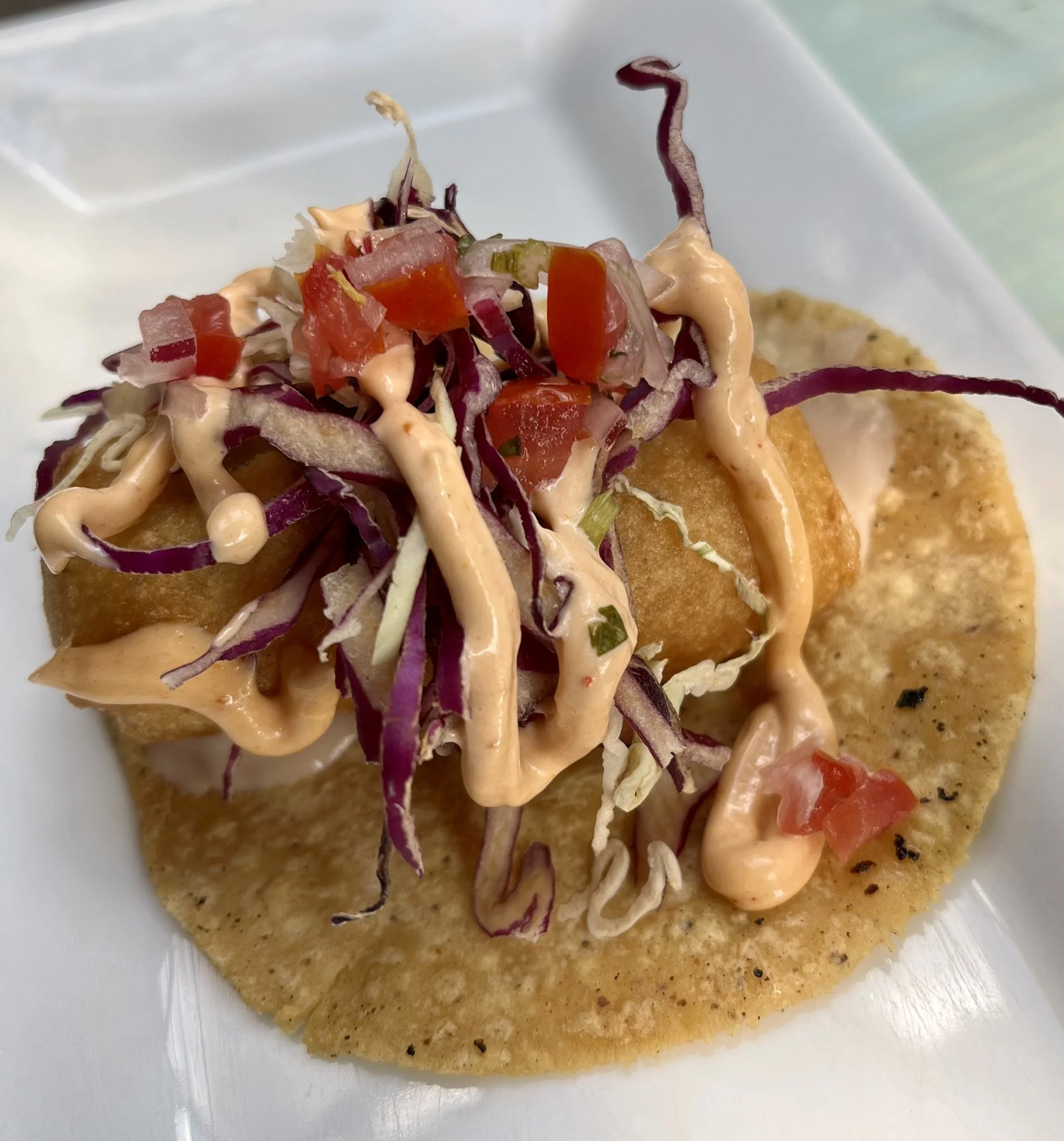Grazing in Ensenada or "Don’t Bother Me I’m In Fish Heaven"
Ensenada, in Baja California, is a low-key fishing town just over an hour from Tijuana and the US border. Jumping off point for a tour of Mexico’s growing wine region, the food scene has exploded in recent years. Dozens of street stalls and small restaurants prepare freshly fried fish and shrimp tacos and seafood ceviches and cocktails. The central fish market tempts with a spectacular array of aquatic bounty. And upscale restaurants proudly present heretically creative variations on regional dishes, making this an ideal destination for the discerning gastronome.
Mexicans eat a lot of meat. In most of the country the concept of a fancy meal out often includes a big hunk of Argentine steak. Tacos stands in the central regions feature meat based fillings, almost exclusively. While the central fish market in Mexico City, Mercado de la Nueva Viga, which provides fresh fish and seafood to all of central Mexico, may be one the worlds largest, even beating out Tokyo’s Tsukiji, Mexican’s annual per capita consumption of fish is low relative even to the U.S. But not on the Pacific coast. There, residents can’t get enough of the oceanic bounty and even make fun of capitalinos: “All they eat is chicharrón (pork skin) in Mexico City,” one local, 18 year old Juan Carlos, scoffed as he downed a mouthful of fresh ceviche at an outdoor pushcart. Coastal residents seem to know their fish as well as their Japanese brethren on the other side.
Fish tacos are the specialty of Ensenada. Everybody loves them and corner puestos – stands – as well as hole-in-the-wall locales open early in the morning and are often surrounded by customers by 10 or 11 a.m. Hand cut strips of fish, usually cazón - a type of small shark - are dipped in a flour batter, sometimes lightly spiced with garlic or cumin, and deep-fried, tempura-style. Legend has it that visiting Japanese fishermen taught them this trick although the theory is dubious – the Japanese themselves learned it from the Portuguese traders. Served in white corn or flour tortillas, they are garnished to taste with an array of salsas, pico de gallo (chopped tomato/chili/onion), a sour cream-mayo mix and crispy shredded cabbage or lettuce.
I start my search for the best at Tacos Floresta, a simple white metal shack perched auspiciously at the corner of Av. Floresta and Juarez in the residential part of town. The empty, straight, impossibly wide avenues of Ensenada remind me of a forlorn part of L.A. where a James M. Cain novel might take place. But Floresta, staffed by three gregarious ladies, breaks the ice – the atmosphere is jovial, even on approach cheery mariachi music wafts out, along with the aroma of fresh fish frying in clean oil. It’s immensely popular, and is one of the best venues for these fried morsels of goodness. The tacos are an exercise in harmony: steaming hot fresh fish itself is crispy on the outside, and almost melts when you bite into it. Carefully selected spiky sauces augment but don’t overwhelm, and the crunch of cool cabbage, shredded fine, provides the perfect contrast to the oily bits. Subtle aromas of roast dry chili, the sea, lime, corn, weave in and out of each other like a Bach fugue. Parroquianos (as return clients are called, referring to members of a Church) banter, discuss the game, the weather, each other’s girls, their no-good husbands, all the while downing icy horchata and more tacos.…
Not far from the ticky tacky strip catering to tourists, Lily, who operates Tacos Lily around the corner from the central fish market, multi-tasks. Preparing for yet another day, she's methodically chopping, stirring and testing the temperature of her oil. Lily appeared on Anthony Bourdain’s travel/food show a couple of years ago, but TV stardom and the proverbial slews of tourists eluded her humble locale. She continues to toil over a hot stove, preparing fresh fish to order while her son serves a few small café tables. Lily’s tacos are fine, giving new meaning to the word ‘fresh’. Only fish and shrimp are ever prepared rebozado, i.e. deep fried in batter. Mexican street food, in its infinite variety, is not innovative, which is why, perhaps, it remains impervious to outside influence. When Lily was queried as to whether she might do, perhaps, clams or mussels, which are abundant in the area, she shrugs. “No,” she replies, no longer surprised by this foolish question, “Someone even asked if I make pulpo (octopus) tacos once; a cada quien… (to each his own)”
Ensenada’s costera is the curvaceous seafront thoroughfare which looks to the harbor and marina. Unlike in the overly commercial southern tourist center Acapulco, development here is low-key and traffic light. Near the corner of Avenida Alvarado, at 11 a.m. on a brilliantly sunny Sunday morning, a crowd, many reeling from the previous Saturday night's partying, gathers around a spread out street food complex known as Mariscos el Güero. This busy gustatory circus proffers seafood so fresh it practically dances. And the crowd knows it. “La Especial”, which almost everyone orders, is a seafood salad comprising three kinds of clams, oysters, shrimp, octopus and fish, perhaps cazón, more likely corvina, discreetly dressed with the liquid from the oysters, lime juice, salsa and garnished with avocado slices. It comes on a plate accompanied by little round tostadas, or in a cup with a spoon. The salty essence of each creature stands on its own. Cheerful employees shuck clams and oysters conversing jocularly all the while. The party’s not over until the last oyster is slurped.
A few blocks down, Don Fidel’s pushcart rests at the corner Miramar. Don Fidel has set up his little cart at this spot almost every day for 27 years. He serves nothing but giant sweet pismo, sometimes called reina, clams. Each one, weighing as much as a pound, is opened to order, the meat chopped and lightly dressed with salsa mexicana, lime, and a touch of Tabasco. I take a spoonful of the clam ceviche, which is served in its own shell. It’s sweet, surprisingly tender and renders not the least hint of pungency. “Do any gringos ever eat here?”, I ask, as the few that pass by look curiously but move on. “Never,” he replies. “They’re afraid of fresh seafood on the street.” But Don Fidel assures me that he knows if there’s a bad clam in the bunch and will not risk alienating a faithful customer. I have become one of the latter.











